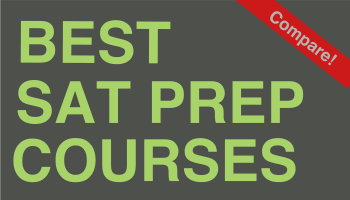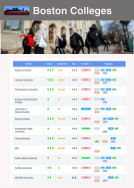
When researching colleges, how do you really know what factors to consider? Below are some common-sense tips.
School Costs and Net Price
School costs can be one of the most important factors in choosing potential colleges or career schools, and costs can vary significantly from school to school. While the cost of college includes tuition and fees, it also includes equipment, travel, and more. Learn about what is included in the cost of college and ways to reduce college costs.
You’ll want to make sure that the cost of your school is reasonable compared to your earning potential in your future career. In other words, you want to make sure that you can earn enough money to cover any student loan payments you may need to make, along with living expenses, after you graduate.
Any school that participates in the federal student aid programs is required to provide information on its cost of attendance and to offer a net price calculator on its website. This calculator will give you an idea of how much a program may cost after subtracting any financial aid. The average net price to attend the school is determined by subtracting the average amount of federal, state, or local government or institutional grant or scholarship aid from the total cost of attendance for the institution’s largest program. You can look up the cost and assess the value of colleges using the College Scorecard.
Financial Aid
Many students worry that tuition and the other costs of continuing their education will be out of reach. But don’t let the potential costs stop you. Cost is only part of the picture. Most students receive some kind of financial aid, and a few students even get a “free ride,” with all their costs covered.
There are many sources of financial aid to help you cover the cost of college or a career school. You should learn about financial aid, including grants, scholarships, work-study, and loans.
Find out whether the school (and the major or program) you’re considering participates in the federal student aid programs (the biggest source of aid for college and career schools); apply for all types of aid for which you might qualify; and meet all deadlines! The Internal Revenue Service also provides tax benefits for education.
Academics
Does the school offer the major or program you’d like to pursue? Does the program have a good reputation? Talk to professionals in the field you’d like to pursue, do a web search, and talk to students who are enrolled in that program. If you aren’t sure what you want to do, does the school give you plenty of options? You can also use the U.S. Department of Labor's career search to find careers that might match your interests.
Accreditation
An accredited school meets certain standards set by an independent agency. It helps ensure the training or education you get meets employer standards in a specific field. Use the U.S. government's accreditation search page to check a particular school’s standards or to find an accredited school in a particular field or location.
If you attend a school that isn’t accredited, you might not be able to get any financial aid. The U.S. Department of Education requires that schools participating in the federal student aid programs be accredited. Also, your state education agency’s aid programs may not offer financial aid at unaccredited schools. In addition, attending an unaccredited school poses the following risks: You might not be able to transfer your credits to another school. For example, if you attend an unaccredited two-year school and then transfer to a four-year school to earn a bachelor’s degree, you might have to start over again at the four-year school if it doesn’t recognize the classes you took.
It may be difficult to get a job. Some employers may not hire someone with a certificate from a school that is unaccredited.
A diploma mill is an unaccredited school (or a business claiming to be a school) that awards a degree without requiring classwork that meets college-level standards. Some will send a “diploma” without you doing any work at all if you pay a fee. Others assign classwork that is so easy that your resulting degree is worthless compared to a degree from an accredited school, and it won’t help you get a good job. Learn more about diploma mills and how to avoid them.
Admission Requirements
Admission requirements vary from school to school, so check the websites of all the colleges you’re interested in. Learn about applying to schools and taking the required tests.
School location, size, and campus life
Give consideration to a school’s location, size, and activities when researching colleges and career schools. Some students want to stay close to their families, and others like the opportunity to go away to school to live on their own. Do you want to go to school in a big city or a small town? Do you want a small, intimate setting? A school that’s big enough to be a city by itself? Or something in between? Keep in mind that the location of a school and your housing options can impact your overall cost.
Does the school offer activities and social opportunities you like? Does it offer the services you need? Does it have a good campus security system? While the school’s website can help you determine some of these factors, a campus visit will help the most. Or, see if the school offers virtual tours of its campus.
Work Flexibility
If you need to work full-time while you’re in school, does the school have night courses or other options to accommodate you? Will they let you attend part-time? Do they offer summer courses? Check the school’s website or talk to the admissions staff at the college or career school that you’re interested in to see what your options are.
Statistics That Count
Some numbers can help you evaluate schools.
Graduation Rate: The percentage of a school’s first-time, first-year undergraduate students who complete their program within 150% of the standard time for the program. For example, in a four-year degree program, entering students who complete within six years are counted as graduates.
Retention Rate: The percentage of a school’s first-time, first-year undergraduate students who continue at that school the next year. For example, a student who studies full-time in the fall semester and continues studying in the program in the next fall semester is counted at this rate.
Job Placement Rate: The percentage of students who are placed in jobs relevant to their courses of study within a set amount of time. You may also want to contact a school’s career center and find out what kind of job placement services it offers students and graduates. The college’s or career school’s website or career center
Loan Default Rate: The percentage of a school's federal student loan borrowers who enter repayment during a particular federal fiscal year, October 1 to September 30, and default within a certain timeframe. You might not be able to get aid from some of our programs at a school that has a high default rate.
Enrollment Contracts
Read any school enrollment contract carefully before you sign it. The contract explains what the school will give you for your money. If a school representative promises you something (such as help finding a job) that’s not in the contract, ask the representative to write that promise into the contract and have it signed and dated. A promise is usually not enforceable unless it’s in writing.
Refund Policies
Find out the school’s tuition refund policy. If you enroll but never begin classes, you should get most of your money back. If you begin attending classes but leave before completing your course work, you might be able to get some of your money back.
Also, find out the school’s return-of-aid policy. If you receive federal student aid (except for Federal Work-Study) and you withdraw from school, some of that money might have to be given back to the source by you or by your school.
Even if you don’t finish your course work, you’ll have to repay the loan funds you received, minus any student loan funds your school has returned to the U.S. Department of Education. Learn more about repaying federal student loans.
Distance learning or online degrees
Lots of schools have begun to offer distance learning, which allows you to access lectures or course materials online or through other electronic media. Whether a distance learning course or degree is right for you is a matter of personal preference.
Be aware that not every distance learning course or online degree is accredited and/or eligible for federal student aid. To find out whether you can receive federal student aid for your program, check with your school’s financial aid office.













































